DBF soars to best finish ever
Design Build Fly secured an impressive 3rd place finish at the 2024 AIAA competition with their innovative aircraft.
By: Amy Sprague
Photos: Courtesy of DBF/University of Washington
Top image: The "Orca" soars in competition.
A&A's Design Build Fly (DBF) team reached unprecedented heights, securing an impressive 3rd place finish at the 2024 AIAA DBF Competition in Wichita, Kansas, with their aircraft “Orca.” This remarkable achievement marks the team's best performance to date and serves as a testament to their dedication, innovative thinking, and collaborative spirit.
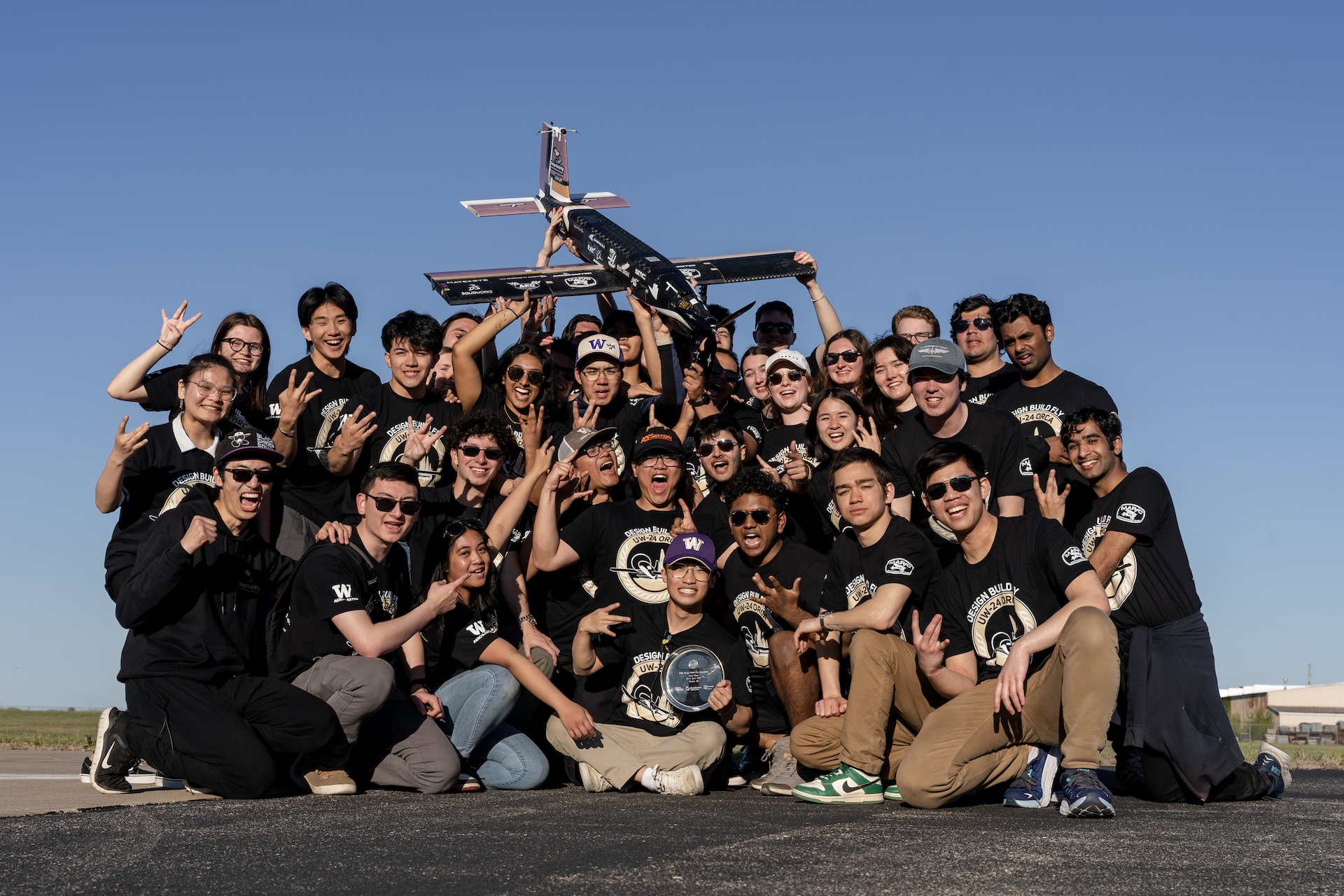
Building upon their success from last year's 5th place finish, the DBF team approached this year's challenge with renewed vigor and a steadfast commitment to excellence. A&A senior Jevoni Sykes, the team's chief engineer, described the mission as developing "an urban air mobility aircraft" with two distinct configurations: an “urban air taxi” and an “urban air ambulance.”
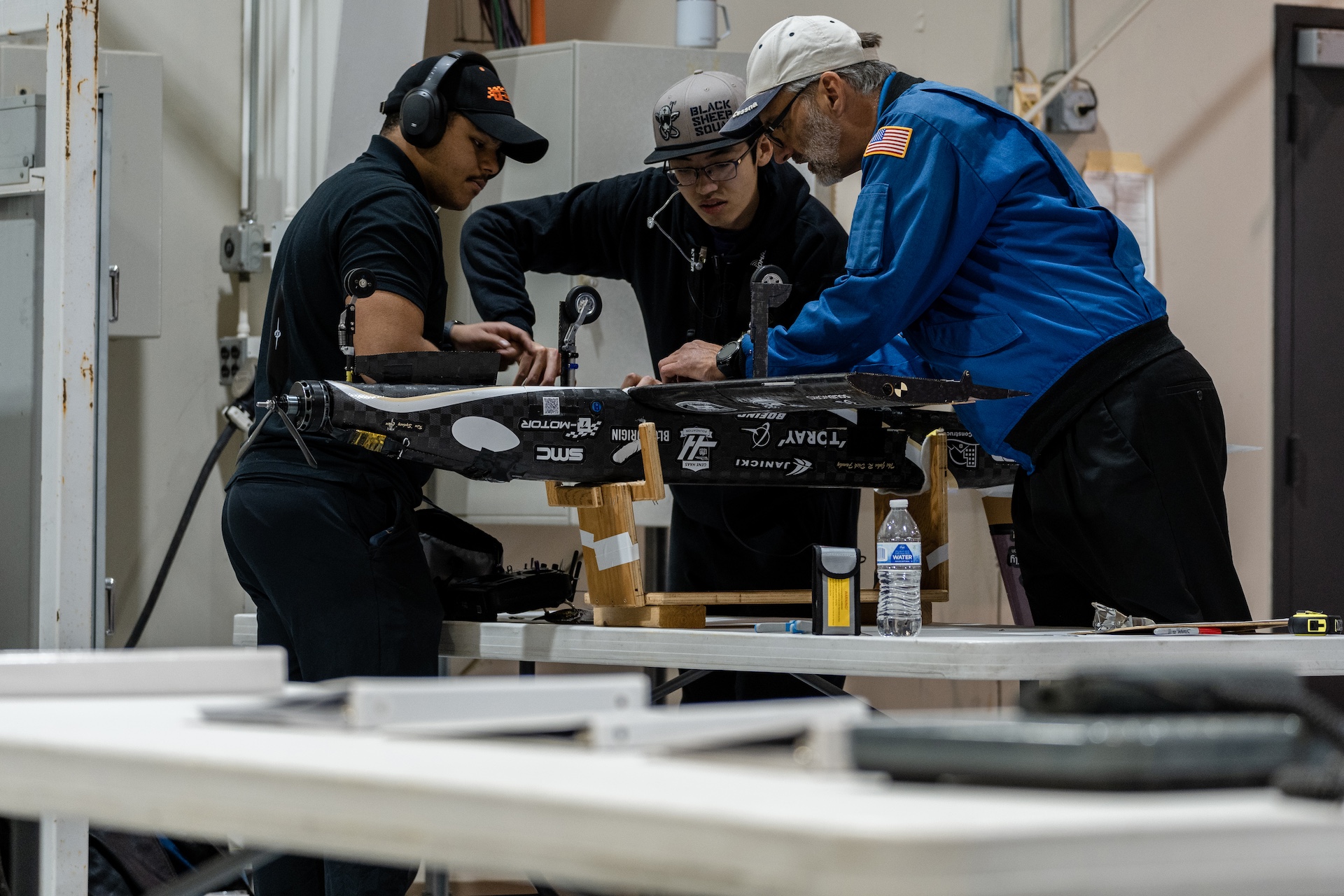
The taxi configuration required the team to optimize for passenger capacity, energy efficiency, and speed, while the ambulance configuration focused on accommodating medical personnel and equipment while prioritizing swift response times. Sykes expressed immense pride in the team's performance, stating, "We did phenomenal in all aspects of this year's competition, we were a top 10 report (8th), we scored the most points in our ambulance mission, and would have scored the most points in the taxi but the loss of a fuse and a wing strike cost us our flight attempt and mission time respectively."
Sykes attributed the team's success to the innovative risks they took and the lessons learned from previous years. "The Orca had some new features. This was our first year implementing retractable landing gears which decreased our drag and made us faster than most other teams," he explained. "We developed and used control surfaces like Fowler flaps and slotted flaps and ailerons, which were entirely new to the club. And we took lessons learned from last year like our monocoque fuselage and expanded and optimized them like decreasing the weight by using thinner nomex honeycomb core and lighter weight carbon fiber as well as implementing the sandwich structure into our wings which we have never done before."
The team's growth and success can be traced back to the transformative efforts initiated a few years ago with Ethan Uehara (A&A ‘21) Daniel Moore (A&A ‘22) playing pivotal roles in rebuilding the team and implementing a structured organizational framework. This foundation enabled the team to handle explosive growth, with over 70 active members last year, and fostered an environment conducive to the team’s motto of “educate and compete.”.
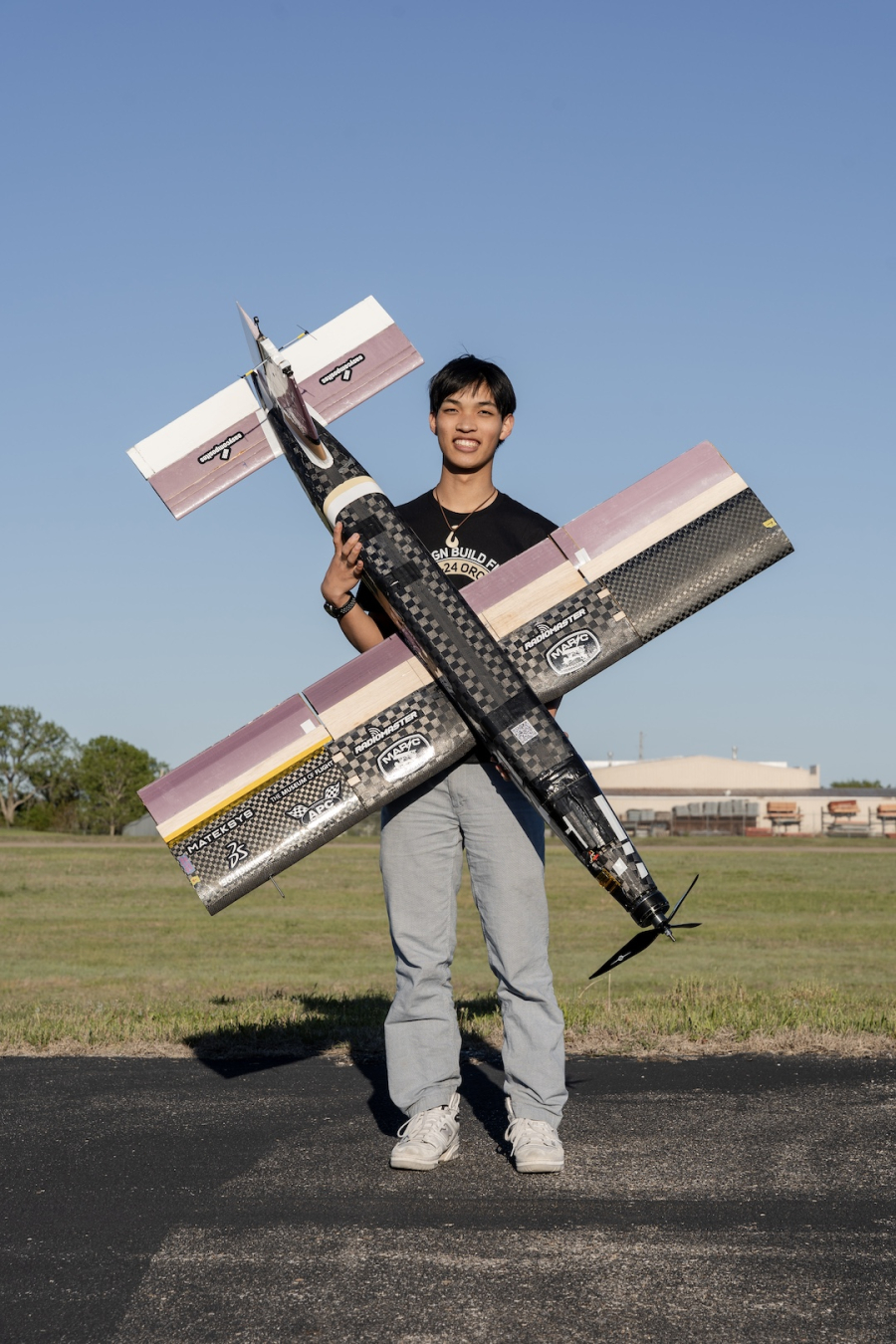
Sykes praised the team's collaborative spirit and dedication. He commended Kaleb Shaw, saying, "Kaleb absorbed every bit of information like a sponge - from aerodynamics and avionics to structural design and manufacturing. His dedication earned him the role of manufacturing lead and next year's technical director." Sykes also highlighted Kai Tom and Ken Chen, noting, "Without Kai, our next structures lead, and Ken, our amazing pilot, we couldn't have designed, built or ultimately flown this plane."
The DBF team's success would not have been possible without the support of their sponsors, including Boeing, Janicki, T-Motor, and many others, as well as the guidance of industry mentors from companies like SpaceX and the Marymoor Radio Control Club. As the team looks ahead to the next competition, Sykes is brimming with confidence, "I am very excited to see what the team does next year, and I think this club is more than capable of taking home the gold with next year's leadership team and returning members."
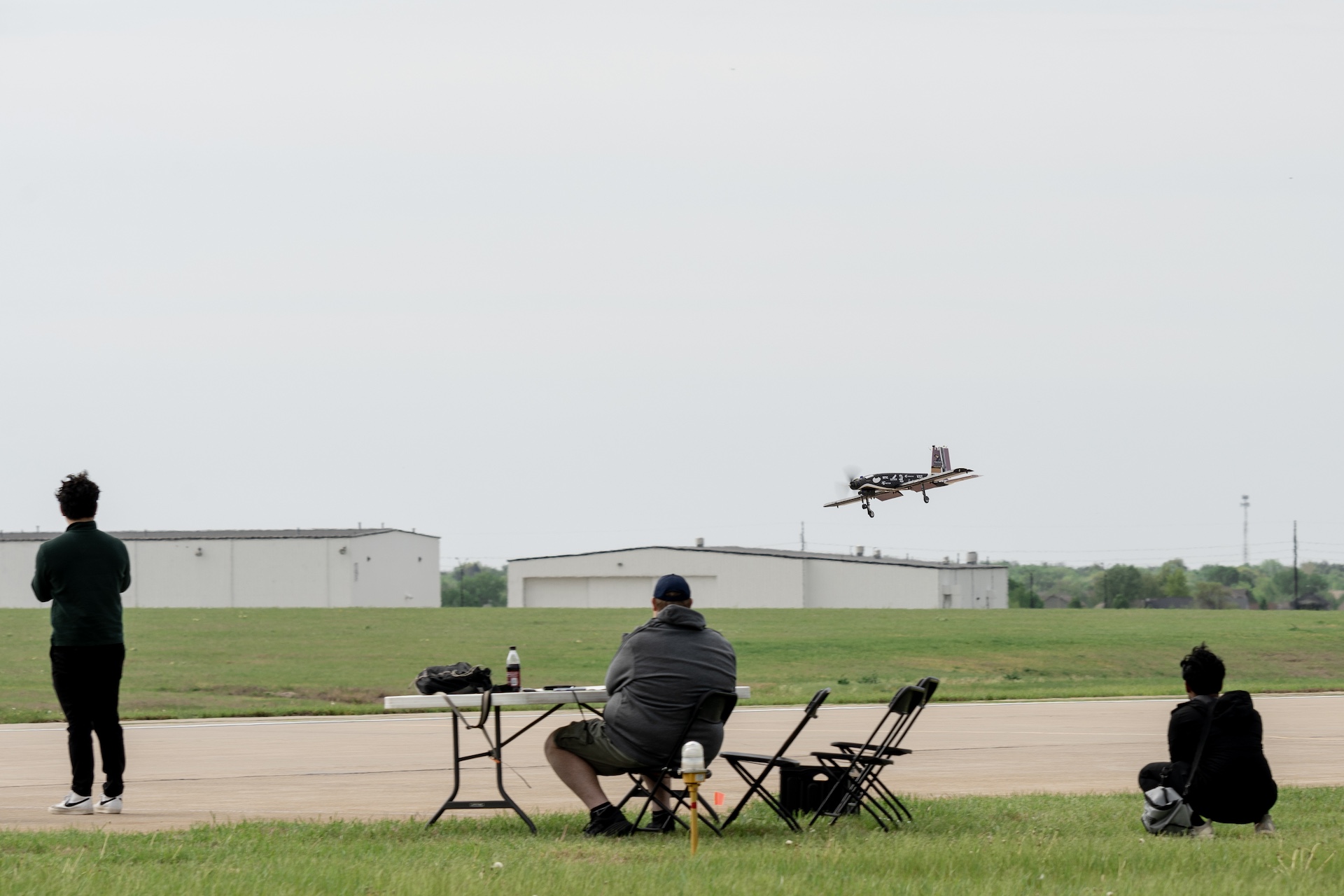
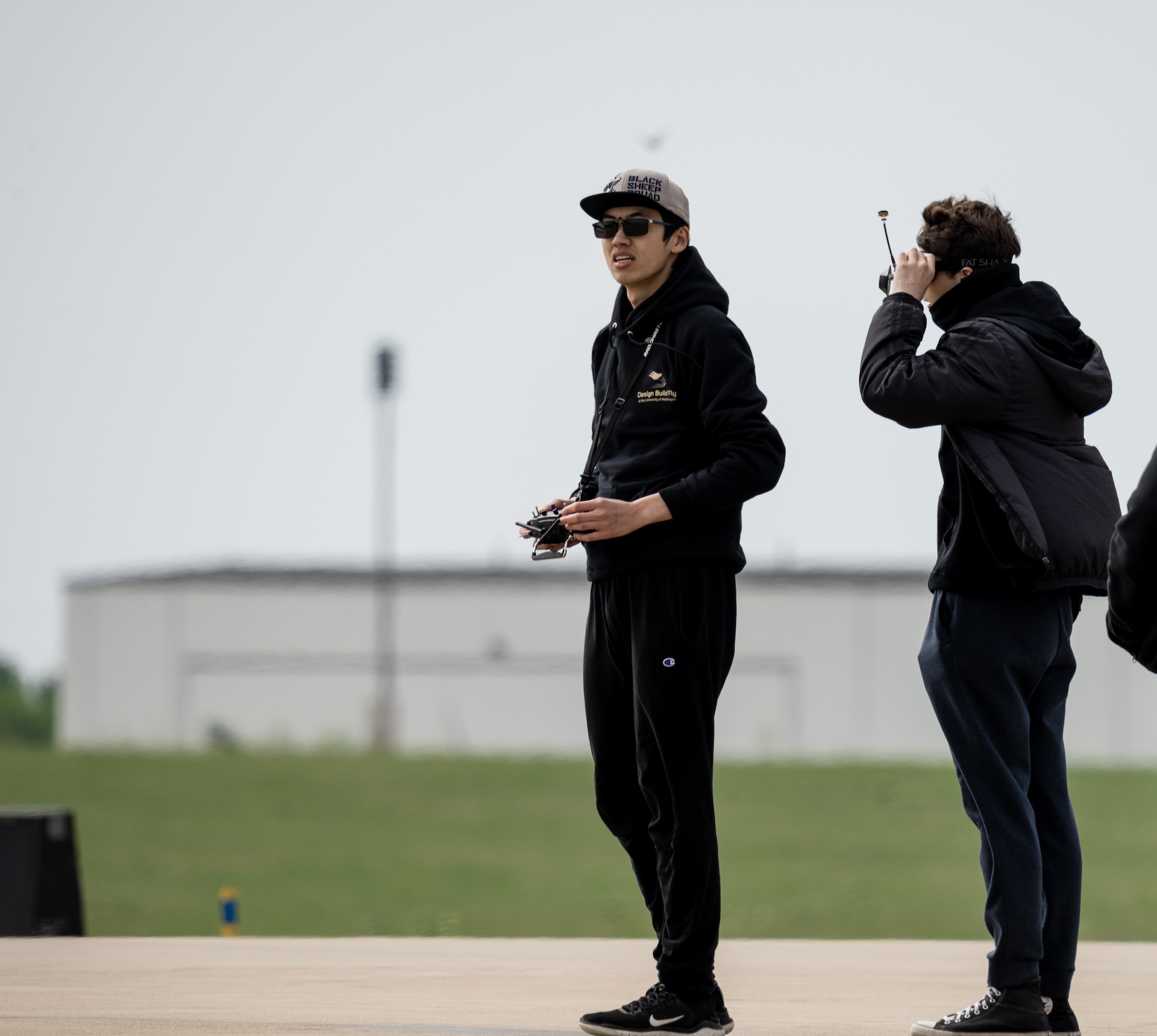
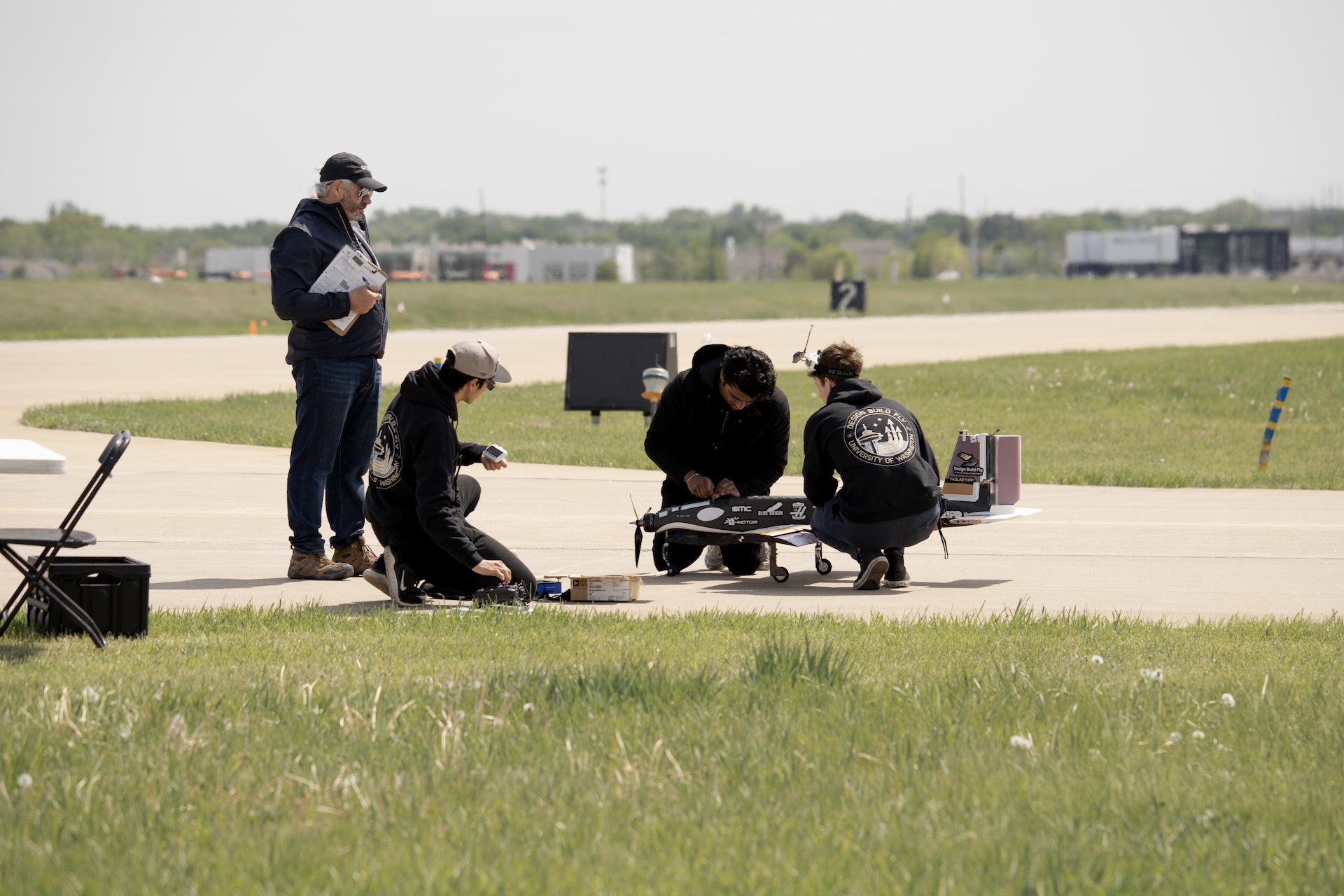
Left: The Orca comes in for a landing during competition. Top right: Ken Chen (left) piloting the Orca next to Kaleb Shaw. Bottom right: DBF flight crew members Ken Chen, Kaleb Shaw, and Ryan Fidelis prep the Orca for another mission.
Kai Tom, on the DBF community
I truly believe DBF would not be successful without the memories created as a team. One of the most electrifying memories was watching the plane fly for the first time. I was sitting on the damp grass with my colleagues full of nervous adrenaline. Twenty seconds later, I heard the motor whine overhead as the carbon fiber aircraft zoomed by. At that moment I just thought, wow, we as a team made that thing fly! That is pretty — cool. In that moment I looked back at all the persistence that took us to this point. All the meetings and discussions that seem to mimic a working environment. All the hours in the shop that brought us closer as a group. I truly appreciated having a community around me that understands the frustrations and glories that come from making something so special. We could not have been successful without everyone.